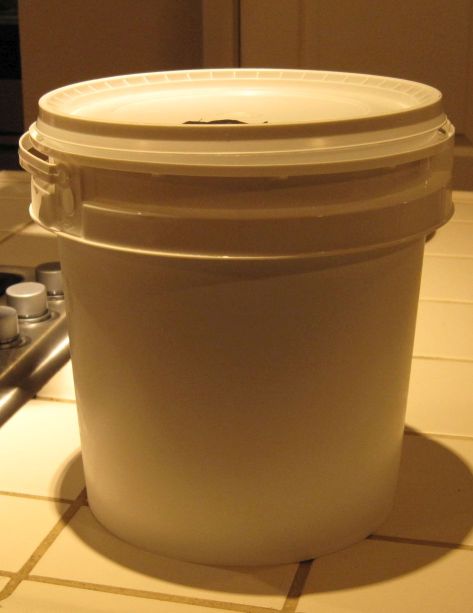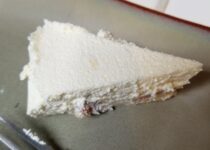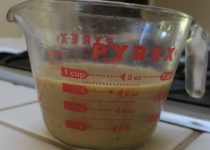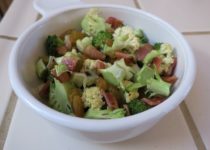Wiltshire Cure for Ham
When BH and I lived in the UK, we had gammon. This is a cured (but not smoked) ham. Actually, it can be smoked as well, but most of the time you will find it not smoked. A common method for making gammon is a Wiltshire Cure for Ham.
Along with this lovely ham, I found a recipe for honey glaze. Oh so yummy!!!
I tried the honey glaze in the US, where hams are almost always smoked. It did not really work that well. I actually found a butcher in the Eastern US making Wiltshire Cure for ham. But it was hugely expensive, and the shipping cost nearly doubled the price. Almost $100 was too much for a gammon to make honey glazed ham!!
So I determined to make my own cured ham. Is this recipe the “real” Wiltshire cure? No one knows, because the Wiltshire family keeps it a secret. What I do know is that this ham was just as good as the gammon I had in the UK.
In this post, I describe how I cured the ham. In another post (Honey Glazed Gammon (cured ham)) you will find the recipe for honey glazing it. I hope you have as much success as I did!
The finished product, honey glaze and all.

The Meat
Fresh (not cured, not smoked, the raw meat) boneless ham – 5-6 pounds from the leg or shoulder (shoulder is called a picnic cut). Traditionally ham is always from the leg, but many people like the picnic cut just as well.
I used boneless because I don’t like carving around the bone. It turns out for curing that it is easier to do boneless as well. If you have bone-in, you need to inject the cure around the bone before putting the ham in the brine. You do not need this step for boneless.
Have I convinced you that boneless is better?!!
If there is skin on your ham, remove it. It impedes the cure and you don’t need it. If you want to, make cracklin’s out of it.
The Brine
In a large (non-reactive) pot stir together:
- 1 pound Kosher salt
- 1 pound dark brown sugar
- 1 generous measuring teaspoon curing salt (Prague Powder #1) – it is also called pink salt but is completely different from Himalayan pink salt. You want curing salt. A flat teaspoon of curing salt is fine for 5 pound ham, but for ham up to 6 pounds, you will want about 1/4 teaspoon more.
- 1 Tablespoon lightly crushed juniper berries
- 1/4 teaspoon coarse ground black pepper
- 1 bay leaf
- 1 sprig fresh thyme or a big pinch of dried thyme
- 1/2 gallon hot water
Bring the mixture to a boil, and stir until the sugar and salt are dissolved. Remove from heat and add enough cold water to make 1 gallon of brine. Cool to room temperature.
Put your ham into a 2 gallon food grade bucket (or something equivalently sized). You can get these buckets at a store selling equipment for home brewing.

Pour the cool brine over the ham. It should be completely covered in brine.

Add a weight to keep the ham submerged. I used a ceramic bowl, but another easy way is to take a gallon sized plastic zipper bag, fill about 1/2 with water, seal well, and put on top of the ham. You don’t want this bag of water to leak or it will dilute the brine!

I put the cover back on the bucket (as you see in the top photo) to keep out any curious critters. Put the bucket in a cool place for 7-9 days, or up to 2 weeks if you want.
1/2 way through the cure, turn the ham over so the part under your weight gets good contact with the brine as well.
What should the temperature be? I have seen posts saying up to 60F, but I kept mine at about 40F (out in my garage in early January).
How long to cure? The brine will be absorbed at about 1/4 inch per day. Since this is a boneless ham, it is absorbing brine on the outside surface but also in the cavity where the bone was. If the thickness of the meat (from outside to the cavity) is 3 inches, and the brine is absorbing from both sides, then the brine needs to move 1.5 inches to cure all the ham. That would be 6 days. So assuming your ham is about as thick as mine, then curing for 7-9 days should be enough.
When the cure is complete, remove the ham, pat dry, cover and refrigerate for no more than 5 days (fresh pork is supposed to keep for 3-5 days in the fridge) before cooking.

Here it is cured, but not cooked. It will be a bit brown due to the dark brown sugar and crushed juniper berries.









